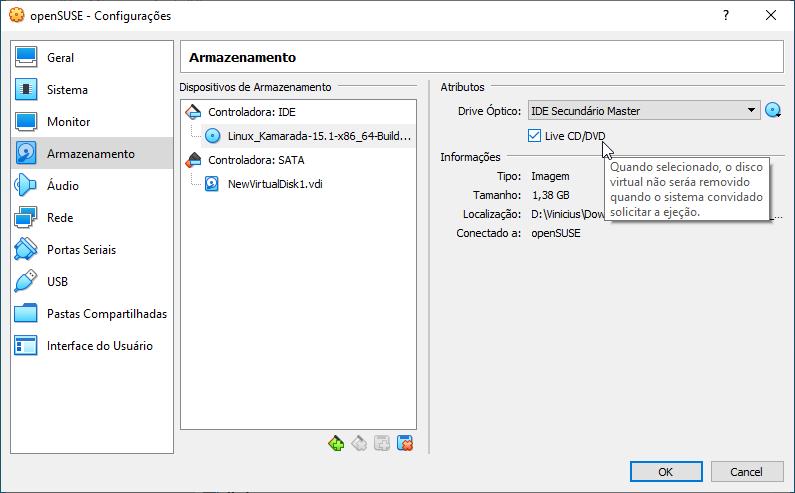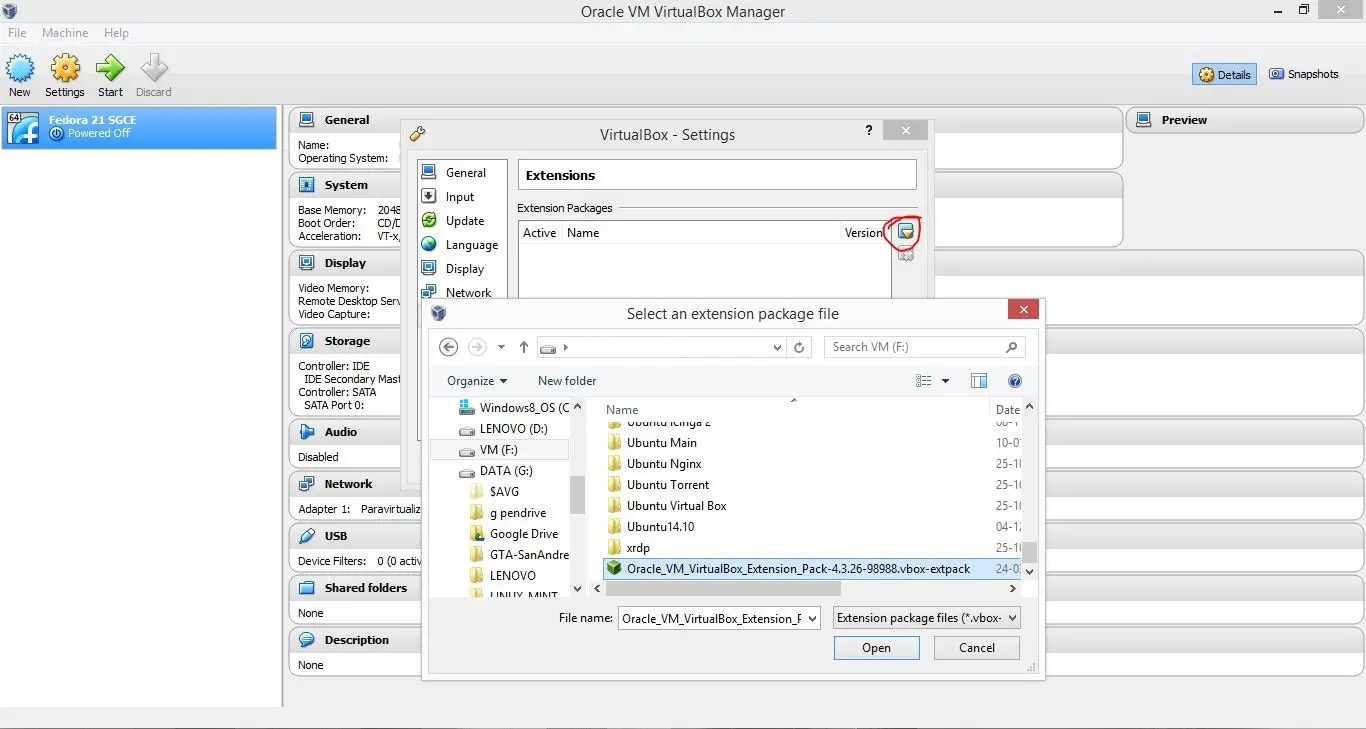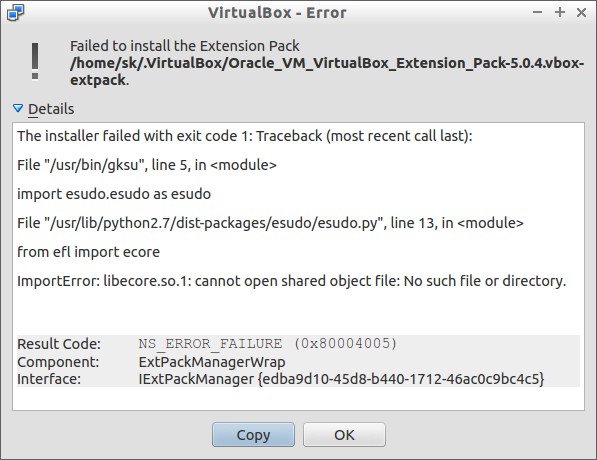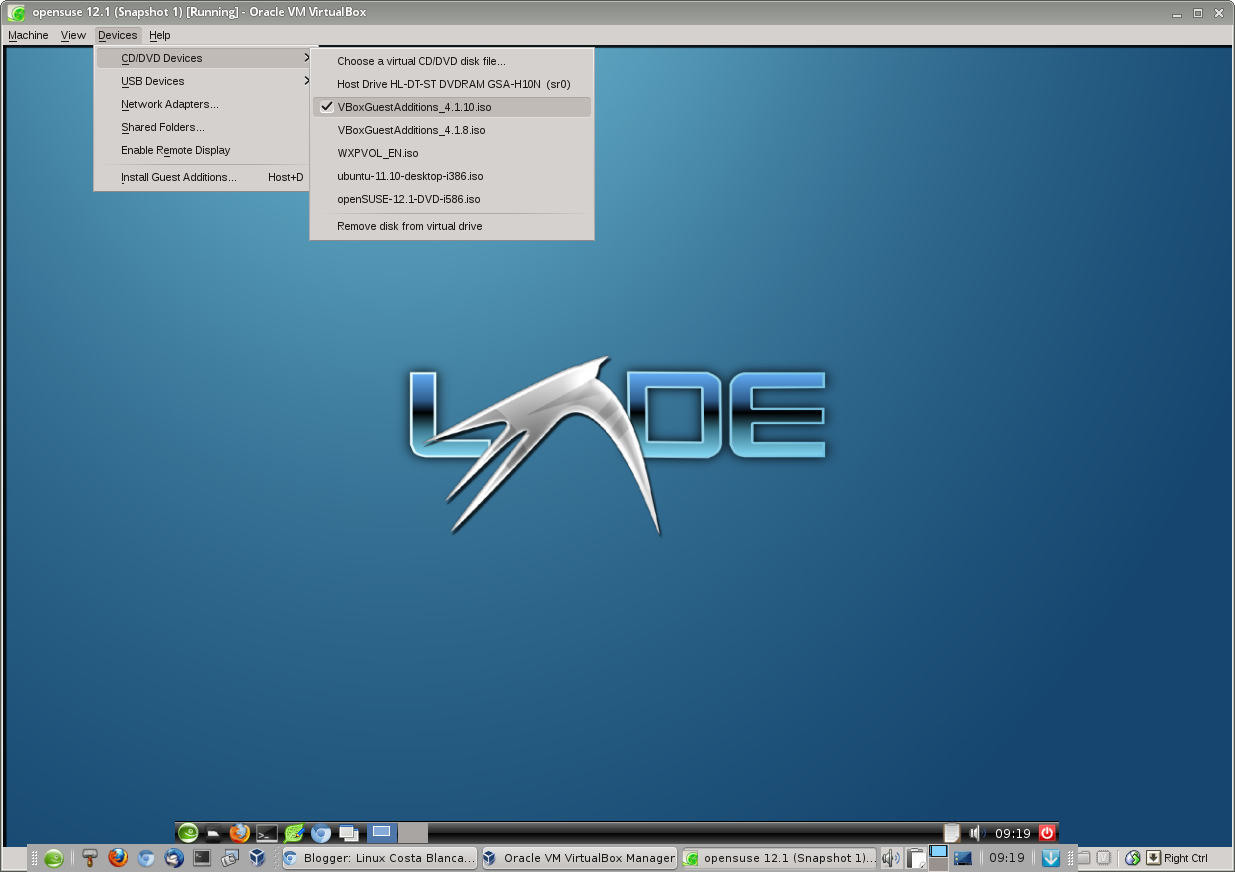This guide explains how you can run virtual machines with VirtualBox 4.0 on a headless OpenSUSE 11.3 server. Normally you use the VirtualBox GUI to ma VBoxHeadless – Running Virtual Machines With VirtualBox 4.0 On A Headless OpenSUSE 11.3 Server – Kreation Next – Support. Oracle VM VirtualBox R User Manual Version 4.3.18 c 2004-2014 Oracle Corporation http://www.virtualbox.org. This guide explains how you can run virtual machines with VirtualBox 4.0 on a headless OpenSUSE 11.3 server. Normally you use the VirtualBox GUI to ma VBoxHeadless – Running Virtual Machines With VirtualBox 4.0 On A Headless OpenSUSE 11.3 Server – Kreation Next – Support.
Tested & working in openSUSE 12.3
Oracle VM VirtualBox Enterprise. Organizations can streamline operations by purchasing Oracle VM VirtualBox Enterprise, which includes commercial licenses and technical support and provides: - 24x7 support from Oracle for the Base Package and Extension Pack - Multiple remote desktop connections (VRDP) to virtual machines. Oracle VM VirtualBox Extension Pack. Free for personal, educational or evaluation use under the terms of the VirtualBox Personal Use and Evaluation License on.
Introduction You can install the fully open source version or the Sun/Oracle version. The latter (Sun/Oracle) is significantly better IMHO. I only talk about the Sun/Oracle version here.Install the Oracle VirtualBox RPM Add this repo, it contains the Oracle VirtualBox RPM and it will supply updates over time. It is currently the correct repo for openSUSE 11.4, 12.1, 12,2, 12.3 and Tumbleweed
 Important, read carefully: You will have a series of possible RPMs available in the package management GUI in Yast. Be very sure to install only the Oracle VirtualBox RPM, not the oss virtualbox RPM. GoTo Yast --> Software --> Software management and select the Oracle RPM. If dependency linkages attempt to install additional packages beginning virtualbox-guest or virtualbox-host kernel modules, then you have made a mistake. Install only the single RPM 'VirtualBox'. Make sure you choose the latest version in the repo.
Important, read carefully: You will have a series of possible RPMs available in the package management GUI in Yast. Be very sure to install only the Oracle VirtualBox RPM, not the oss virtualbox RPM. GoTo Yast --> Software --> Software management and select the Oracle RPM. If dependency linkages attempt to install additional packages beginning virtualbox-guest or virtualbox-host kernel modules, then you have made a mistake. Install only the single RPM 'VirtualBox'. Make sure you choose the latest version in the repo.Additional RPMs You will also need these RPMs: kernel-devel, gcc, make. Install them in yast or run this zypper command (as root) Add your username to the vboxusers group VirtualBox permissions will not work properly until you do this. GoTo Yast --> Security and Users --> User and group management. Highlight and Edit you username. Select the Details tab and tick the box to add yourself to 'vboxusers'. Then reboot to activate the changes.
Next: the Extension Pack This pack provides additiopnal functionality like USB and RDP support. GoTo the VirtualBox dot org download site https://www.virtualbox.org/wiki/Downloads and click the link for the Extension Pack. NB be sure to select the extension pack with the same version as your installed version of VirtualBox! Download the pack, a file with a name like Oracle_VM_VirtualBox_Extension_Pack-4.0.14-74382.vbox-extpack. Download the pack, then browse to it and click it with the mouse. That will cause it to be installed (provided the VirtualBox RPM has been installed first).

Each time you upgrade the VirtualBox RPM, you will have to go back to the Extension Pack download page and acquire and install the new Extension Pack to match the version number of the upgraded RPM.
Where's the GUI? In KDE GoTo Kicker --> Applications --> System --> Virtual Machine (Oracle VM VirtualBox).
After a Kernel Upgrade in the openSUSE Host
Oracle Vm Extension
This is arguably a part of the installation of VirtualBox. When you have a kernel upgrade, after you reboot, you must run this command as root to recompile the kernel modules:If USB support fails: If the Guest VM does not detect USB devices, or if they are detected but 'grayed' out in the menu bar, check that you added your username to the vboxusers group. Check that the file xx-vboxdrv.rules exists in the directory /etc/udev/rules.d/That's all folks. I only wanted to talk about the installation, which can be a bit tricky in the detail.
[PS: Tumbleweed only: if you're a Tumbleweeder, you might occasionally install an upgrade of the VirtualBox RPM with 'zypper dup'. Just check that the earlier version of the RPM has uninstalled. Run 'rpm -qa | grep VirtualBox' and make sure the earlier one has gone.]
Oracle Vm Virtualbox Extension Pack
...
chroot to the openSUSE root and run mkinitrd
mkinitrd Description:
mkinitrd creates an initial image used by the kernel for preloading the block device modules (such as IDE, SCSI or RAID) which are needed to access the root filesystem. mkinitrd automatically loads filesystem modules (such as ext3 and jbd), IDE modules, all scsi_hostadapter entries in /etc/modprobe.conf, and raid modules if the system’s root partition is on raid, which makes it simple to build and use kernels using modular device drivers.
Any module options specified in /etc/modprobe.conf are passed to the modules as they are loaded by the initial ramdisk.

The root filesystem used by the kernel is specified in the boot configuration file, as always. The traditional root=/dev/hda1 style device specification is allowed. If a label is used, as in root=LABEL=rootPart the initrd will search all available devices for an ext2 or ext3 filesystem with the appropriate label, and mount that device as the root filesystem.

chroot Description:
